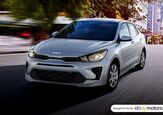Piston Slap: Fear the Anaerobic Gasket Maker?

TTAC commentator slavuta writes:
Something came into my head related to break-in period and time of purchase of the car. These days, modern engines often don’t have actual gaskets; the gaskets are formed from a chemical compound spread on one surface and pressed-on with another.
As everything liquid becomes hard or nearly hard, it requires a curing period. From the time an engine is assembled to that time when it starts seeing real usage could pass months or even a year+. Of course, the engine sees some usage from testing and from the car being moved around during shipment.
But let’s say you buy this car in the middle of a harsh winter. We know that materials shrink and expand as temperatures goes down and up. Do you think buying a car during summer gives more curing and settling time to these gaskets vs buying in the winter, especially in the areas where winters are really cold? Yes, engine becomes hot during operation but many materials seem to get more elastic with heat and more hard and fragile with cold. Ever tried to leave even an empty garden hose outside in the cold? Your thoughts – are there any break-in advantages from buying in the summer?
Sajeev answers:
So yeah, I cannot find concrete (as it were) examples of manufacturers using this liquid-to-solid gasket technology. While vehicles regularly use glorified rubber o-rings (i.e. molded rubber) in place of traditional gaskets (that are not head or exhaust manifold gaskets), clearly I lack the Google-Fu to verify your vantage point.
Don’t get me wrong: machine these metal parts perfectly and traditional gaskets aren’t needed. Just ask the timeless, gasket-less (sort of) Citroen 2CV.
Also don’t get me wrong: anaerobic gasket maker can be a lifesaver, with few pitfalls. Are they used often from the factory? Maybe!
And when applicable, the parts cured long before a new vehicle’s first taste of lot rot and/or your first monthly payment. According to Permatex’s snazzy graph ( here), their anaerobic gasket maker has an 80-percent cure rate after 100 hours (4-ish days) on aluminum parts. Sure, just-in-time manufacturing means parts won’t sit around gathering dust, but components aren’t leaving the powertrain factory and meeting an assembled car body in much less than 4 days.
They are gonna spend at least a day on/near the assembly line. Plus, odds are good that the OEM-specified gasket makers have a cure rate quicker than off-the-shelf Permatex. So my thoughts?
It doesn’t matter what time of year, what amount of heat cycling, etc., as the gaskets cured well before you said “can I test drive it?”
Bonus! A Piston Slap Nugget of Wisdom:
Let’s not forget the real hero of automotive seals/glues: the structural adhesive. They’ve been in play since at least the early 1980s (found during my research of the Ford Fox Platform) keeping unibody platforms tighter and lighter, and we’ve never heard of cars literally falling apart from poor structural glue…have we?
[Image: Shutterstock user Fusionstudio]
Send your queries to sajeev@thetruthaboutcars.com. Spare no details and ask for a speedy resolution if you’re in a hurry…but be realistic, and use your make/model specific forums instead of TTAC for more timely advice.

More by Sajeev Mehta
Latest Car Reviews
Read moreLatest Product Reviews
Read moreRecent Comments
- ToolGuy This thing here is interesting.For example, I can select "Historical" and "EV stock" and "Cars" and "USA" and see how many BEVs and PHEVs were on U.S. roads from 2010 to 2023."EV stock share" is also interesting. Or perhaps you prefer "EV sales share".If you are in the U.S., whatever you do, do not select "World" in the 'Region' dropdown. It might blow your small insular mind. 😉
- ToolGuy This podcast was pretty interesting. I listened to it this morning, and now I am commenting. Listened to the podcast, now commenting on the podcast. See how this works? LOL.
- VoGhost If you want this to succeed, enlarge the battery and make the vehicle in Spartanburg so you buyers get the $7,500 discount.
- Jeff Look at the the 65 and 66 Pontiacs some of the most beautiful and well made Pontiacs. 66 Olds Toronado and 67 Cadillac Eldorado were beautiful as well. Mercury had some really nice looking cars during the 60s as well. The 69 thru 72 Grand Prix were nice along with the first generation of Monte Carlo 70 thru 72. Midsize GM cars were nice as well.The 69s were still good but the cheapening started in 68. Even the 70s GMs were good but fit and finish took a dive especially the interiors with more plastics and more shared interiors.
- Proud2BUnion I typically recommend that no matter what make or model you purchase used, just assure that is HAS a prior salvage/rebuilt title. Best "Bang for your buck"!


































Comments
Join the conversation
Thanks, Sajeev. You inspired me to find this https://www.quora.com/Can-a-4-stroke-gasoline-car-engine-be-built-without-a-head-gasket-One-cast-or-fused-If-so-would-the-added-compression-ability-be-significant Now, looking at different engines diagrams today, I see that indeed, all use gaskets for valves and head but oil pans and chain covers may not have them. But then, these are not as important.
Working in shops there were always goopers, and non-goopers. Myself, I'd always go with a dry gasket on clean surfaces if I had a choice. The problem with the goobers, err, goopers, is they all tended to use too damn much. You'd pull an engine apart and find balls of goop that had ended up in cooling systems, oil passages, everywhere. The question I never could seem to get answered was how long to wait between applying a line of goop and assembling the part. Some GENERAL guidelines, based on the type of goop, materials, temp, etc. would be helpful.